In the postwar period, Montreal became home to the world’s third largest community of Holocaust survivors outside of Europe. Thousands of them arrived in the city between 1947 and 1955, through either the War Orphans Project, or various labour schemes, or family sponsorship, and set out to remake their lives by rebuilding their families and recreating their communities.
Refugee Boulevard: Making Montreal Home after the Holocaust is a multimedia project that captures the initial experiences of child survivors who settled in the St. Urbain Ghetto, a neighbourhood known today as the Mile End or the Plateau. A historical audio tour, which can be experienced in person or virtually, as well as online videos detail what it was like for these children to arrive to a new country alone or with surviving family members, build relationships, deal with adversity and discrimination, search for joy, and simply move on.
It is our hope that these stories about the past will open up cultural conversations around the roles that cities, neighbourhoods, ethnic organizations, and Canadian citizens continue to play in immigrants’ varied resettlement experiences.

Musia Szpisajzen (née Schwartz, 5th from right) en route to Canada from Germany, 1948. Credit: Alex Dworkin Canadian Jewish Archives

Renata Skotnicka (née Zajdman, standing) with friends sliding on Mount Royal, 1949. Credit: Sharon Zajdman

Ted Bolgar (first on left) and Paul Herczeg (first on right) with a group of fellow Hungarian war orphans dressed in identical suits from Schreter’s. Credit: Paul Herczeg

From left to right : Sidney Zoltak, Bessie Eichler, Ann Dickstein, and Ben Bedzow at Bessie and Ben’s engagement in 1954. Sidney would go on to marry Ann later that year. Credit: Sidney Zoltak
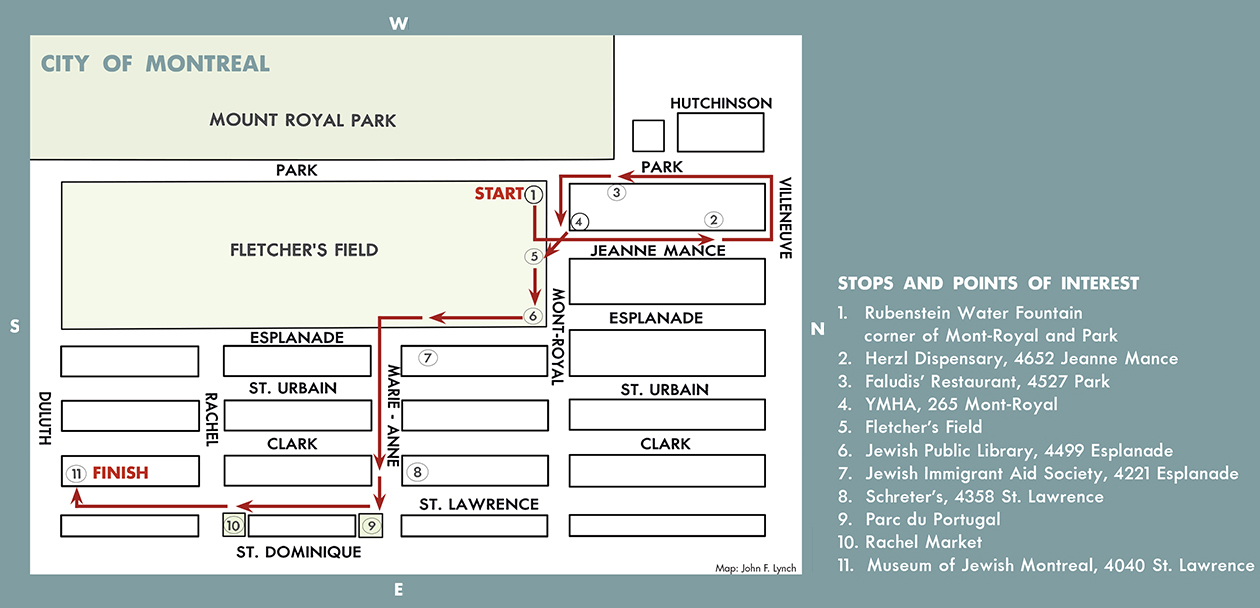
Also available for purchase at the Montreal Holocaust Museum and the Museum of Jewish Montreal.
If you can't make it to Montreal's Mile End neighbourhood to enjoy the tour, you can experience it in this virtual tour that combines the audio recording with street view imagery.
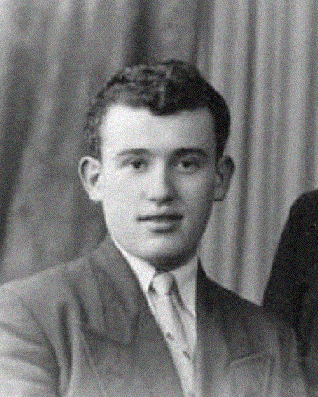
Fishel Goldig, 1948. Credit: F. Goldig
Fishel Goldig, who narrates this walk, was born in 1933 in Mielnica, Poland. At the beginning of 1942, he and his family were forced into the Borszczow Ghetto. At the end of that year, they went into hiding in a small cellar on a Ukrainian farm. They remained there until liberation in spring 1944. The Goldigs moved to a number of places in Europe before immigrating to Canada in 1948 through the family sponsorship program. In Montreal, Fishel studied at Yeshiva Merkaz Hatorah High School. He continues to perform in theater and occasionally sings in local synagogues. In 2015, after telling his story of survival to 180 young people, mainly from Montreal, he decided to become a speaker at the Montreal Holocaust Museum. He has since had the privilege of speaking to hundreds of young people and adults. Fishel has four children and seven grandchildren.
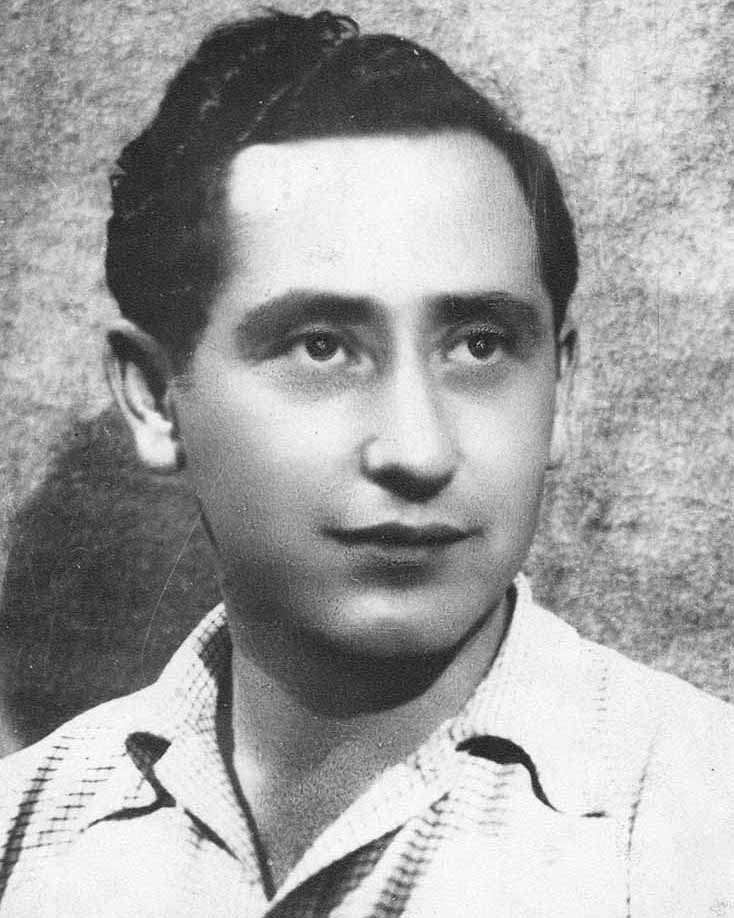
Ted Bolgar, 1947. Credit: Ted Bolgar
Ted (Tibor) Bolgar was born in 1924 in Sarospatak, Hungary. In April 1944, he and his family were taken to the Satoraljaujhely Ghetto and then to the Auschwitz-Birkenau Concentration Camp. Upon arrival, Ted’s sister and mother were sent to the gas chambers and he was separated from his father. From there, Ted was sent to clean up the rubble of the former Warsaw Ghetto. He survived a death march back into Germany to the Dachau Concentration Camp and from there he was sent to two other slave labour camps, Muhldorf and Mitlegars. Following liberation, Ted learned that his father was alive but remained intent on leaving Europe. To do so, he falsified his age and status to meet the War Orphans Project’s requirements. He arrived in Montreal in 1948 and eventually established himself in the fruit wholesale industry. He married a fellow Hungarian survivor, Marianne Guttman, in 1954, and together they raised a family that now includes a number of grandchildren and great grandchildren. In addition to being a prolific speaker for the Montreal Holocaust Museum for thirty years, Ted has participated as a survivor on the March of the Living, accompanying the Montreal group on its annual trip to Poland and Israel, for fifteen years.
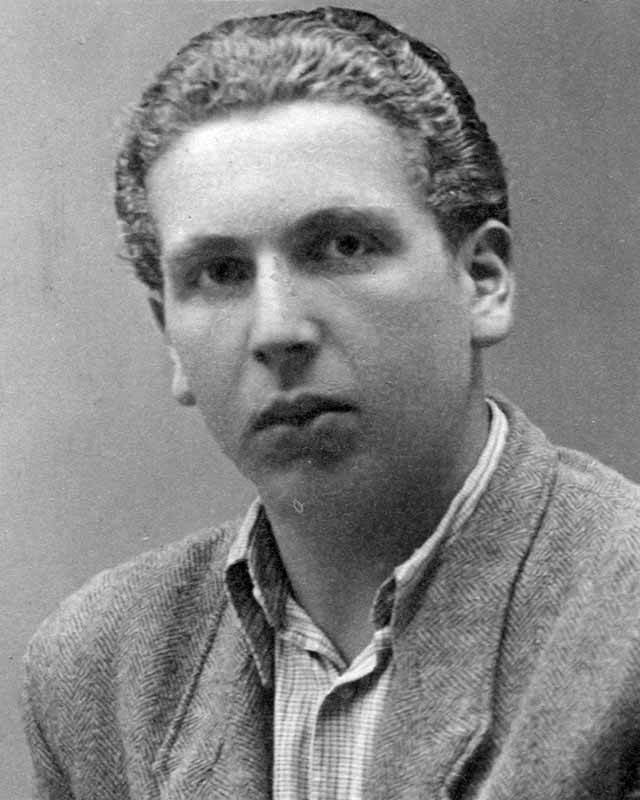
Jan Paul Herczeg, 1947. Credit: Alex Dworkin Canadian Jewish Archives
Paul J. Herczeg was born in 1930 in Ujpest, Hungary. In July 1944, he and his parents were forced into cattle cars bound for the Auschwitz-Birkenau Concentration Camp. Paul and his father passed the selection process and were later transported to the Dachau Concentration Camp, but his mother died there. As part of Dachau’s potato peeling brigade, Paul survived by salvaging scraps that were designated as pig rations. His father was not as fortunate. Five months of hard labour coupled with a lack of food and care killed him. Following liberation in spring 1945, Paul moved to several cities in Germany before arriving in Canada in January 1948 through the War Orphans Project. Upon settling in Montreal, Paul frequented the Jewish Public Library and also taught English to Hungarian immigrants. He began his career in retail management and went on to establish an import company with a fellow Hungarian survivor. Paul married Judith Singer in 1958, also a survivor from Hungary, and together they raised one daughter. He was a founding member of the Montreal Holocaust Museum, and went on to speak to students in local schools, on behalf of the museum, for twenty years.
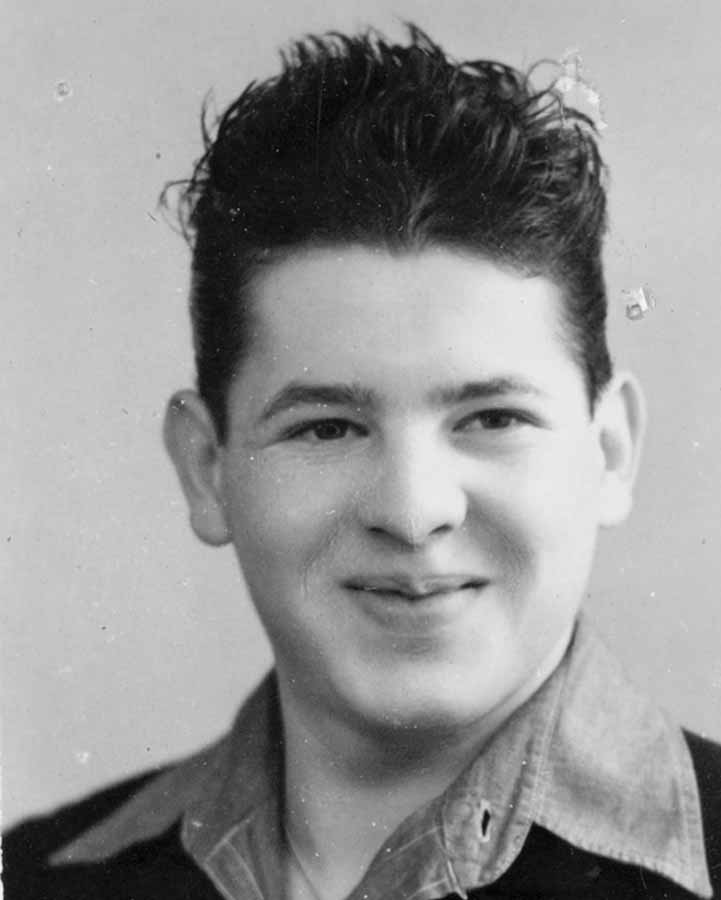
Thomas Strasser, 1947. Credit: Alex Dworkin Canadian Jewish Archives
Tommy (Thomas) Strasser was born in 1926 in Nove Zamky, Czechoslovakia. In 1942, he went to work in his family’s manufacturing business in Budapest, Hungary. Germany’s 1944 invasion led Tommy to be sent to a number of forced labour camps and then on a death march. Through the efforts of Raoul Wallenberg, Tommy was able to return to Budapest, where he was sent to the ghetto and then an orphanage. Following liberation in January 1945, he learned that no one in his family had survived and so he made his way to France. He lived there until 1948, when he immigrated to Canada through the War Orphans Project. In Montreal, he established himself in the retail sector, married Annie Brenner, a Polish survivor, in 1960, and now has a large family that includes several grandchildren. As a Holocaust survivor, Tommy believes it is his duty to educate and inform as many people as possible of the tragedies and horrors he experienced, so that history will not be repeated. This conviction has led him to share his story with thousands of visitors at the Montreal Holocaust Museum over the last several decades.
Ted, Paul, and Tommy consider themselves family, building and sustaining relationships since they arrived in Montreal in 1948.
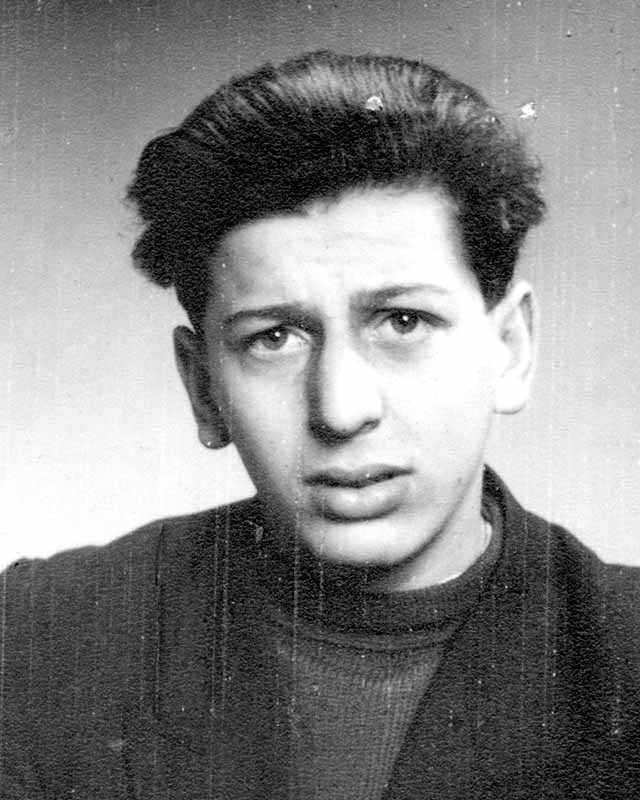
George Reinitz, 1947. Credit: Alex Dworkin Canadian Jewish Archives
George Reinitz was born in 1932 in Szikszo, Hungary. In 1944, he and his family were deported to the Auschwitz-Birkenau Concentration Camp where his mother and sister were murdered. George remained with his father, because he lied about his age, but after contracting pneumonia and being sent to the hospital, they were separated and his father was later shot on a death march. After liberation in January 1945, George moved to various displaced persons camps and also an orphanage before immigrating to Canada in 1948 through the War Orphans Project. Soon after arriving in Montreal, he became a world-class wrestler, and in 1956 he started a successful business, Jaymar Furniture. George married a Canadian-born Jew, Eleanor Schwartz, in 1958 and together they have a large family that now includes several great grandchildren. George has supported the Montreal Holocaust Museum since its inception and was a speaker there for several years, which enabled him to share his story with thousands of students. He also gives testimony in Florida, where he spends his winters. He published a memoir about his life in 2017.

Miriam Musia Szpisajzen, 1947. Credit: Alex Dworkin Canadian Jewish Archives
Musia Schwartz (née Szpisajzen) was born in 1930 in Tomaszów Lubelski, Poland, and raised in Lwow. In June 1941, her family was forced into the city’s ghetto. Soon organized raids led to the disappearance and death of many relatives. Her mother was taken in August 1942. Musia was sent to the Janowska Concentration Camp but managed to convince soldiers that she was not Jewish and was freed. Her father procured a Christian birth certificate for her; she survived by working as a maid in Warsaw. After the war, Musia was re-united with an aunt, her only surviving relative. At the Eschwege and Aglasterhausen Displaced Persons Camps, she made her education a priority. She came to Canada in 1948 through the War Orphans Project and settled in Montreal. In 1950 Musia married a fellow Polish Jew, Leon Schwartz, whom she met at the Jewish Public Library. When their two children started school, Musia began university studies; she went on to earn a PhD in comparative literature and taught literature. She also played a formative role at the Montreal Holocaust Museum, interviewing dozens of fellow survivors for its interview collection as well as for the USC Shoah Visual History Foundation during the 1990s, to ensure that their experiences were documented.

Renata Skotnicka, 1947. Credit: Sharon Zajdman
Renata Skotnicka-Zajdman was born in 1928 in Warsaw, Poland. Following the deaths of her parents, she studied in a Russian boarding school until its bombing in June 1941. Between 1941 and 1943, Renata entered and escaped the Warsaw Ghetto three times. Aided by the Polish Underground, she was able to pass as Catholic and thus avoided being sent to Treblinka. In April 1943, Renata was captured in a German dragnet and deported to the Third Reich as a slave labourer, where she remained until liberation. While sheltered in a displaced persons camp, Renata trained as a nurse. In 1948, she immigrated to Canada and settled in Montreal. She married Abram Zajdman, also a survivor from Poland, in 1953. Together they raised two children and built a successful import-export company. In the early 1990s, Renata began to tell her story, becoming the first interviewee for the McGill University Living Testimonies Project, then an interviewer, and eventually its associate director. She also conducted interviews for the USC Shoah Visual History Foundation. Additionally, Renata led student tours through Poland, recounted her experiences, both at home and abroad, reunited long-lost relatives with hidden children who had, up to that point, little to no knowledge of their Jewish roots, and served as a historical consultant on a Hollywood film about Irena Sendler. Renata passed away in 2013.
We want to begin by thanking those who are at the heart of this project: our interviewees. Their kindness and enthusiasm in sharing their stories and personal photographs is reflected throughout this project. Our hope is that we have created a tour that allows the beauty and power inherent in their stories to be retold for years to come. Thank you Ted Bolgar, Paul Herczeg, George Reinitz, Tommy Strasser, Musia Schwartz, and Renata Zajdman. We conducted interviews with Sidney Zoltak and Muguette Myers too, and we appreciate their willingness to help us further contextualize survivors’ postwar experiences; excerpts from their interviews are available here.
The Jewish Public Library Archives, Montreal (and its archivist Jessica Zimmerman), the Alex Dworkin Canadian Jewish Archives (and its archivist Janice Rosen), the Museum of Jewish Montreal, and Concordia University’s Centre for Oral History and Digital Storytelling were fundamental in helping us develop a deeper understanding of Montreal’s postwar Jewish community. We also thank Zelda Abramson for her enthusiasm and willingness to share interview stories and photographs, John Lynch for creating our accompanying map, and Lindsey Barr for conducting extensive research into the institutional histories of this period.
Refugee Boulevard was made possible with funding from the Social Sciences and Humanities Research Council of Canada. Our respective employers--Dawson College, Saint Paul University, and the Montreal Holocaust Museum--generously provided us with additional funding as well as the time and flexibility required to complete the various steps of this project.
We would also like to thank you, our listener, for engaging with these stories. There are important ways in which survivors’ postwar experiences connect to and intersect with those who continue to arrive in Montreal to rebuild their lives. These stories should not be lost on us as we move forward and try to create a just society.
Happy Listening!
Stacey Zembrzycki, Nancy Rebelo, Anna Sheftel, Eszter Andor, Philip Lichti, and Joyce Pillarella
Stacey Zembrzycki teaches in the History Department at Dawson College in Montreal, Canada. An oral and public historian of ethnic, immigrant, and refugee experience, she has worked with Holocaust survivors in Montreal since 2008, conducting interviews with them and participating on the 2011 March of the Living as a survivor chaperone. Zembrzycki is the author of According to Baba: A Collaborative Oral History of Sudbury’s Ukrainian Community (UBC Press, 2014), which was short-listed for the 2016 Kobzar Literary Award. She is also co-editor of Oral History Off the Record: Toward an Ethnography of Practice (Palgrave Macmillan, 2013), winner of the Oral History Association’s 2014 Book Award, and Beyond Women’s Words: Feminisms and the Practices of Oral History in the Twenty-First Century (Routledge, 2018), which won the Oral History Association’s 2019 Book Award.
Eszter Andor is Commemorations and Oral History Coordinator at the Montreal Holocaust Museum (MHM). She works with Holocaust survivors who both share their stories with students and give video testimony to the museum. Andor is also responsible for the museum’s oral history collection as well as the production of video material for its various projects. She organizes commemorations and other events that involve survivors too. Andor helped to create the museum’s Holocaust Life Stories website and the Building New Lives virtual exhibit, produced by the MHM for the Virtual Museum of Canada. She has training in oral history and Judaic Studies and before moving to Canada from Hungary, she worked for many years for a non-profit organization in Europe collecting oral history interviews with Holocaust survivors.
Nancy Rebelo teaches in the History Department at Dawson College in Montreal, Canada. She has worked on various public history projects, including Project 55: A Historical Audio Tour of Ethnic Communities on St-Laurent Boulevard Aboard Bus 55 and a walking tour titled Memories of My Home … Memories of My Neighbourhood—Cabot Square. These projects showcase the voices and memories of Montrealers, providing an intimate and untold history of the city’s diverse communities and its neighbourhoods. Given her interest in pedagogy, Rebelo has also worked on a number of initiatives that ensure student success within Dawson’s Social Science program. Additionally, she is one of the coordinators for the college’s annual Social Science Week Conference.
Anna Sheftel is an Associate Professor of Conflict Studies at Saint Paul University in Ottawa, Canada. She is an experienced oral historian who has done projects in Bosnia-Herzegovina and with Holocaust survivors in Montreal. She has also published extensively on oral history practice and ethics, most notably in Oral History Off the Record: Toward an Ethnography of Practice (Palgrave Macmillan, 2013), co-edited with Stacey Zembrzycki, which won the Oral History Association’s 2014 Book Award.
Multimedia Production: Philip Lichti
Graphic Design and Web Development: MAT3RIAL
Accompanying Booklet Graphic Design:Joyce Pillarella
Translation: Lexicos
